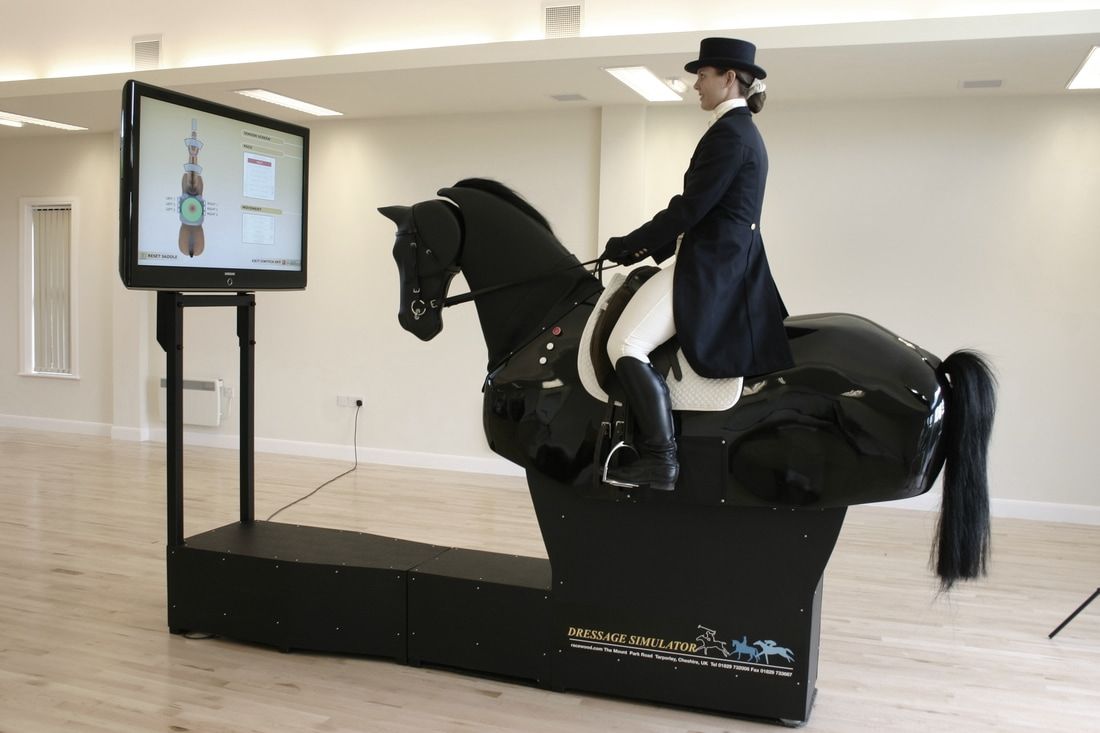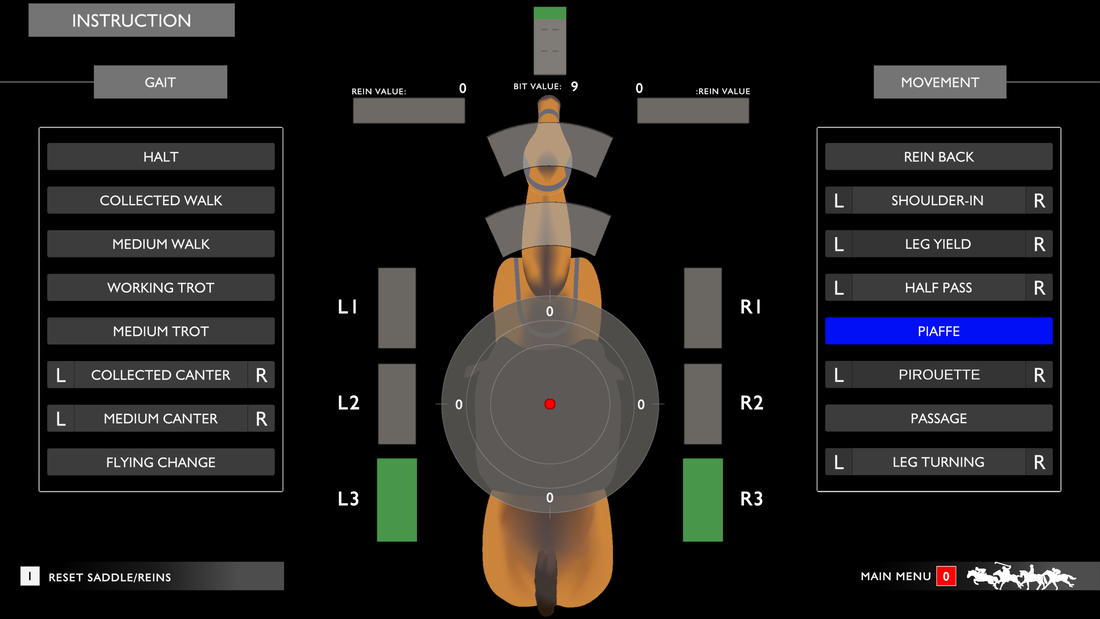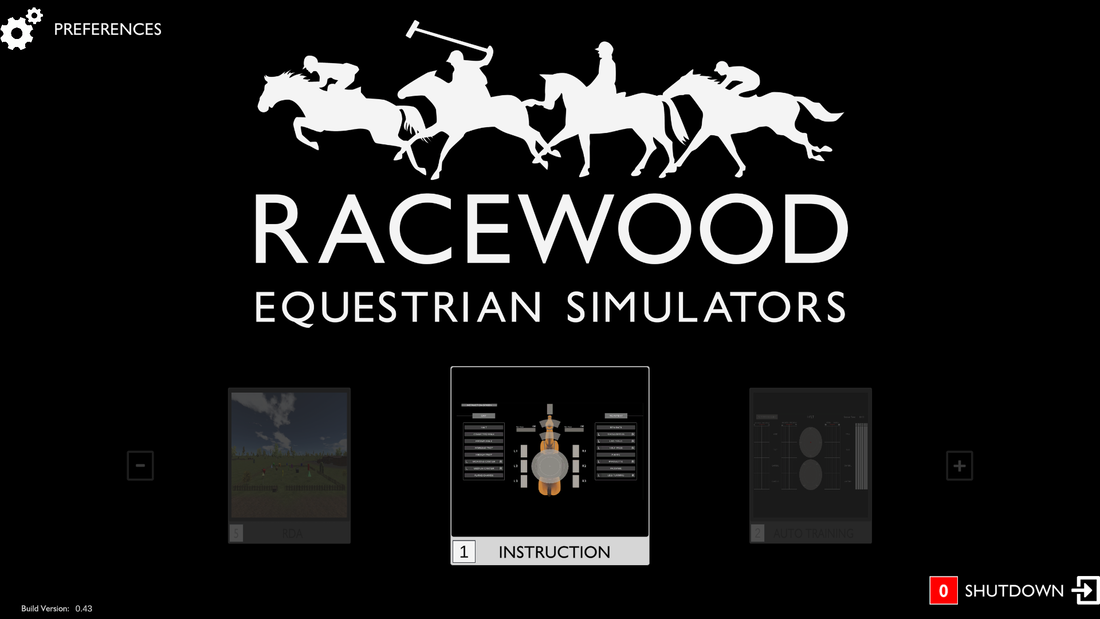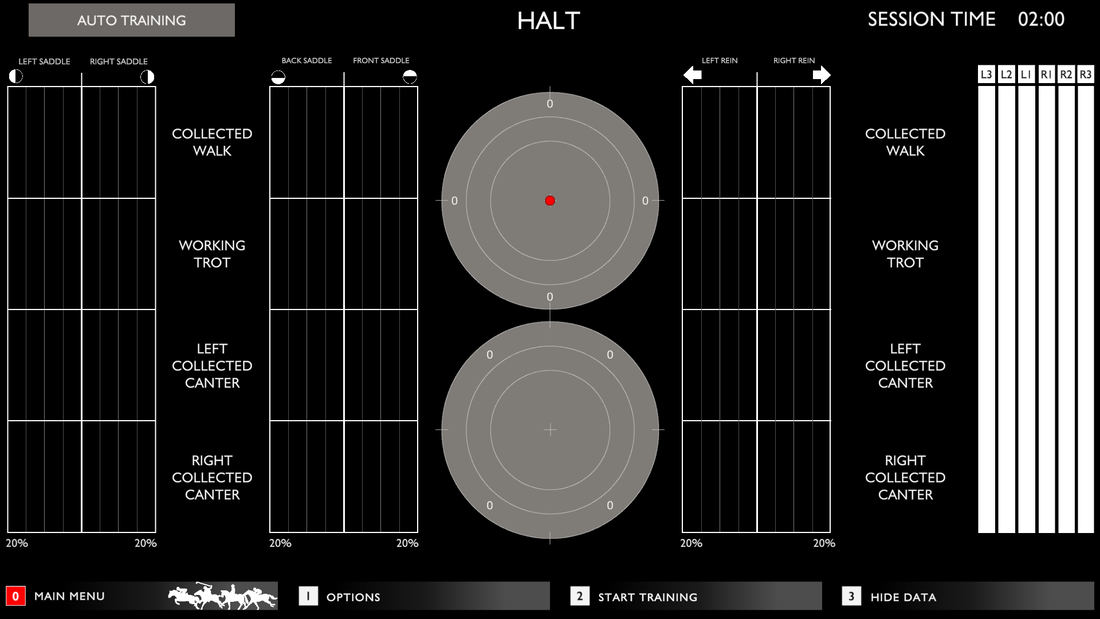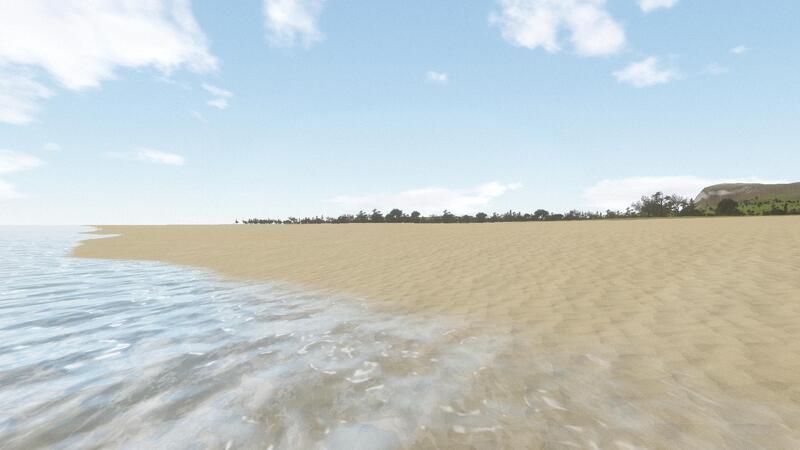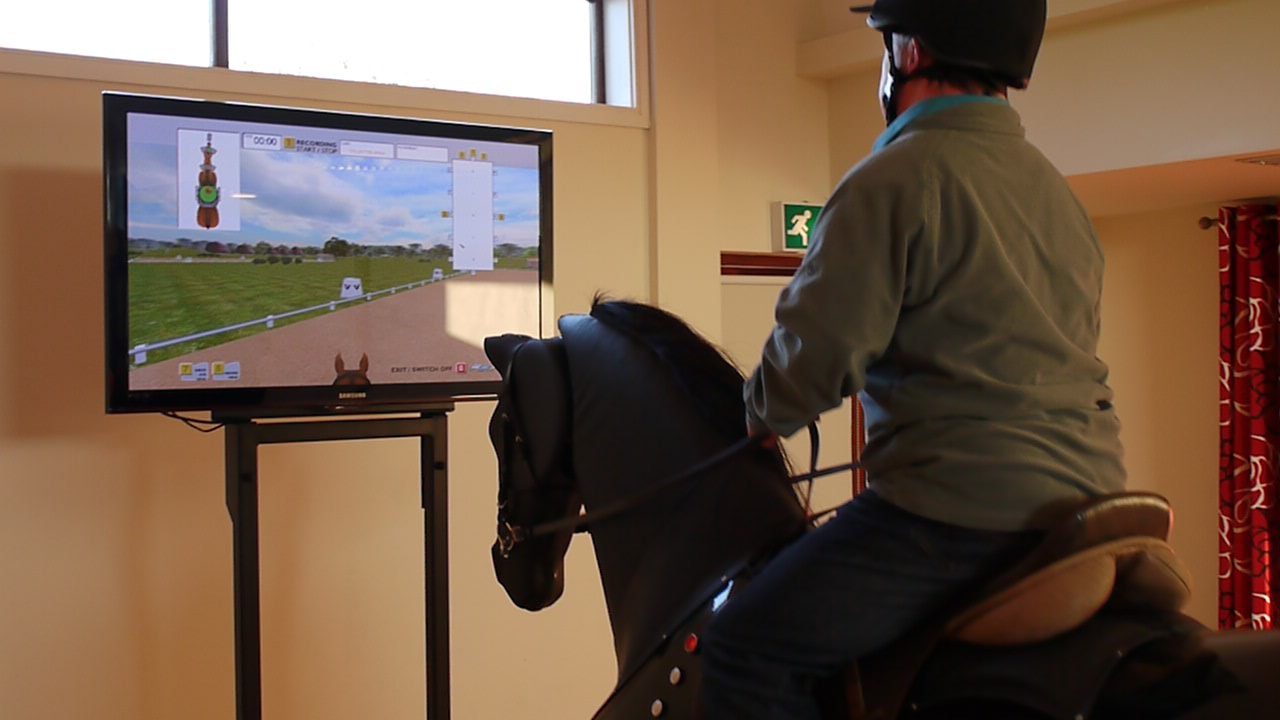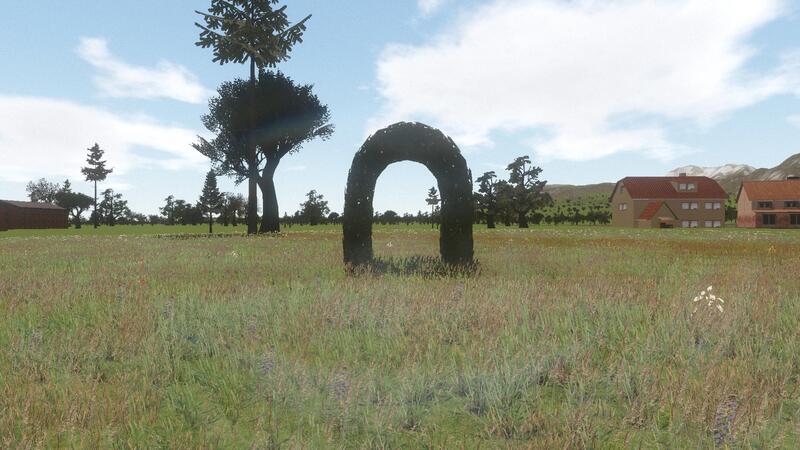dressage simulator ( NOW INCLUDING rda SOFTWARE AS STANDARD)
|
The Interactive Dressage Simulator is a training tool championed by coaches and instructors world-wide, to advance the skills and confidence of equestrians at all levels; beginners and leisure riders, to the more advanced rider and professionals. The Dressage Simulator enables students to perfect advanced dressage movements; such as Piaffe, Passage and Half Pass, whilst also giving riders the option of practising basic arena work and fun rides.
The Interactive Dressage Simulator offers a revolutionary way to focus on skills and balance by viewing immediate visual feedback on seat position and riding movements. The Dressage Simulator is now also commonly used by other industry professionals; equestrian physiotherapists, SEN Therapists, Hippotherapists, research students and personal trainers. *Now includes the Riding for the Disabled software as standard. “I was pleasantly surprised how realistic the ride was when I tried it. It helps the rider to learn correct seat and position, timing of the aids, even how and when to make half halts. The ‘horse’ helps by giving the rider the correct feel in self carriage, the responsiveness and the rhythm that is only achieved by the well trained Dressage horse. It is an invaluable training tool.” David Hunt (FEI Dressage committee member, President International Dressage Trainer Club, President British International Dressage Trainers Foundation, British Dressage Director of Training). Prices from £44,250 +VAT (horse only to be made interactive at a later date) (excludes delivery) Buy now Prices from £54,250 +VAT (Full interactive model) (excludes delivery) Buy now
| |||||||
RIDER BALANCEBalance and position in the saddle is displayed on screen - this allows the instructor to analyse and assess what a rider is doing, using information also collected from the rein sensors and leg sensors.
|
Practice a testAs well as basic ground work, the Dressage Simulator allows riders to practise a number of pre-programmed tests or practice their own.
|
AUTO-TRAINING ROUTINEThe auto-training routine is a firm favourite with instructors as it provides a meaningful and repeatable assessment of rider balance, bit contact and leg pressure though the gaits. It is excellent for assessing what a rider does in the saddle whilst moving completely automatically though walk, trot and canter. All sensors activity is recorded for 1 or 2 minutes and results can be printed off afterwards.
|
All the features of the Dressage Simulator, with the additional benefits of our Riding for the Disabled software.
For many with physical and/or mental disabilities, horse riding offers a therapy that they simply cannot achieve elsewhere. The Racewood Dressage Simulator offers the same, rhythmical, life-like motion of our other simulators, and can carry riders of up to 16 stone. The simulator can be run all day, whatever the weather, allowing schools to offer riding lessons and therapies round the clock, in a safe and controlled environment.
Specialist RDA software
Working directly with RDA in the UK, Racewood has developed a NEW, digital landscape. Based on the countryside challenge, riders can explore over 4,000 acres of land, ranging from a stroll through a village, a hack through the woods or a ride on the beach. Interactive features allow the rider to engage with the environment e.g. posting a letter, collecting eggs, visit the farmyard. The software keeps track of how far each rider has travelled, the locations they have visited and the things they have seen. It also has the option to provide a printed certificate.
"The long-term benefits of using a Racewood Simulator have been amazing, I’ve gone from not being able to walk at all as a result of tremors to being strong enough to take a few steps with a walker, all because my muscles have become more engaged and working together at once to improve and support my movement. I have more stamina and can ride at a higher intensity for longer. My riding has greatly improved on a living horse and I’ve seen better reactions and more comfortable responses in the horse I am riding due to postural and positional corrections established overtime while on the simulator."
Winnie, Para Rider and Disability Activist (READ FULL ARTICLE)
"My name is Lewis Baker-Vose, I am fourteen years old. I have celebral palsy which affects all four of my limbs. Recently I began riding at Pendle Group Riding for the Disabled Association. I thoroughly enjoy this and cannot praise them enough. I ride the mechanical computerised riding simulator, which was bought by the National Lottery Fund. It helps me with my posture, core strength and stability, concentration, stamina, my walking ability and last but not least my speech and confidence."
Lewis Baker-Vose
"I try to ride once a week and have coaching on the simulator once a month... It has really helped with my co-ordination, timing and technique"
Robert Brida, Calon RDA Group
For many with physical and/or mental disabilities, horse riding offers a therapy that they simply cannot achieve elsewhere. The Racewood Dressage Simulator offers the same, rhythmical, life-like motion of our other simulators, and can carry riders of up to 16 stone. The simulator can be run all day, whatever the weather, allowing schools to offer riding lessons and therapies round the clock, in a safe and controlled environment.
Specialist RDA software
Working directly with RDA in the UK, Racewood has developed a NEW, digital landscape. Based on the countryside challenge, riders can explore over 4,000 acres of land, ranging from a stroll through a village, a hack through the woods or a ride on the beach. Interactive features allow the rider to engage with the environment e.g. posting a letter, collecting eggs, visit the farmyard. The software keeps track of how far each rider has travelled, the locations they have visited and the things they have seen. It also has the option to provide a printed certificate.
"The long-term benefits of using a Racewood Simulator have been amazing, I’ve gone from not being able to walk at all as a result of tremors to being strong enough to take a few steps with a walker, all because my muscles have become more engaged and working together at once to improve and support my movement. I have more stamina and can ride at a higher intensity for longer. My riding has greatly improved on a living horse and I’ve seen better reactions and more comfortable responses in the horse I am riding due to postural and positional corrections established overtime while on the simulator."
Winnie, Para Rider and Disability Activist (READ FULL ARTICLE)
"My name is Lewis Baker-Vose, I am fourteen years old. I have celebral palsy which affects all four of my limbs. Recently I began riding at Pendle Group Riding for the Disabled Association. I thoroughly enjoy this and cannot praise them enough. I ride the mechanical computerised riding simulator, which was bought by the National Lottery Fund. It helps me with my posture, core strength and stability, concentration, stamina, my walking ability and last but not least my speech and confidence."
Lewis Baker-Vose
"I try to ride once a week and have coaching on the simulator once a month... It has really helped with my co-ordination, timing and technique"
Robert Brida, Calon RDA Group
